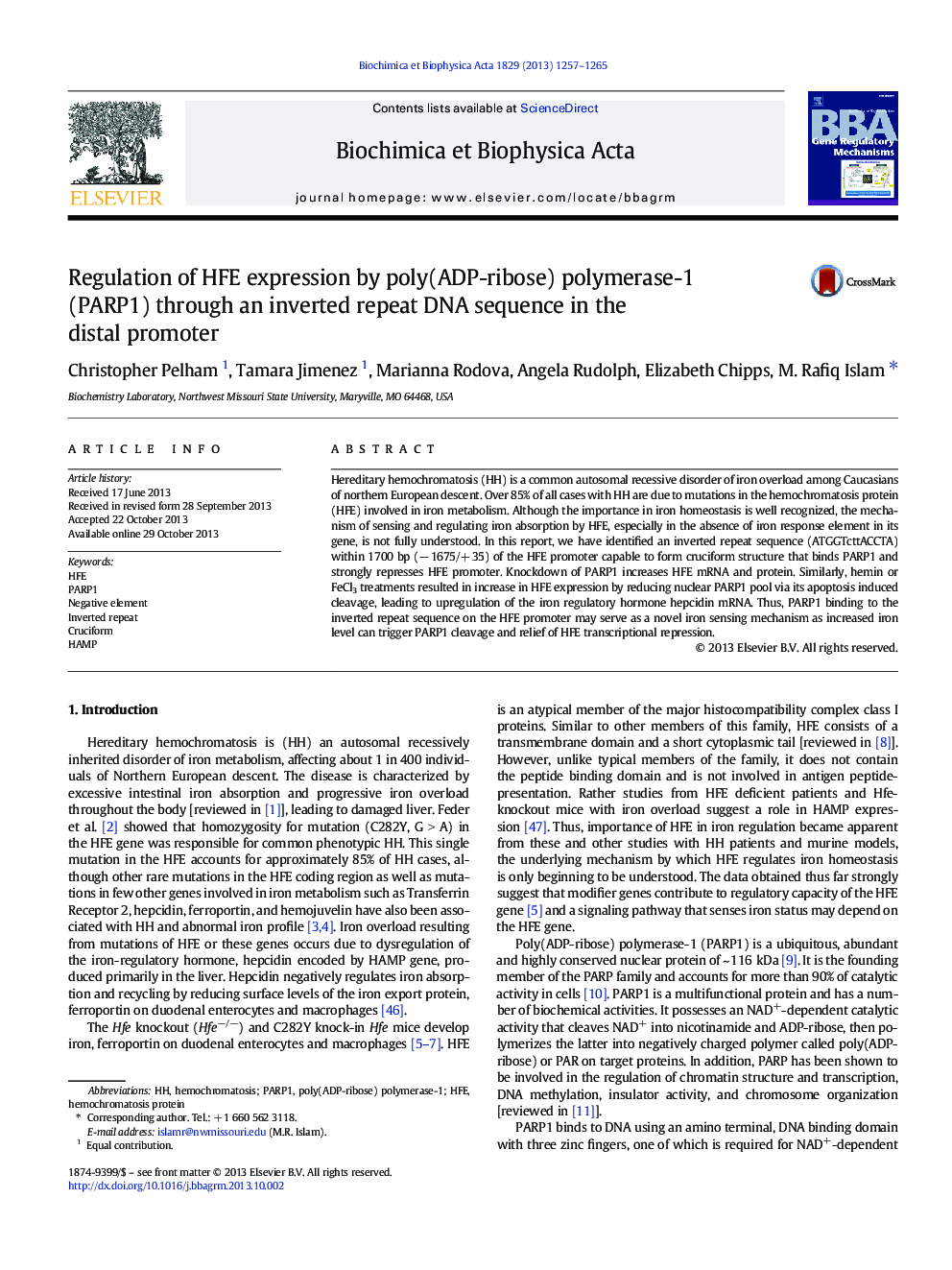| Article ID | Journal | Published Year | Pages | File Type |
|---|---|---|---|---|
| 1946443 | Biochimica et Biophysica Acta (BBA) - Gene Regulatory Mechanisms | 2013 | 9 Pages |
•An inverted repeat sequence within 1700 bp of the HFE promoter acting as a repressor was identified.•PARP1via binding this site repressed HFE transcription, for which activity was not required.•Excess iron increased HFE expression by reducing nuclear PARP1pool via apoptotic induced cleavage.•Excess iron also increased iron regulatory hormone HAMP mRNA correlated to HFE increase.•Thus, PARP1 binding to the HFE promoter may serve as a novel iron sensing mechanism.
Hereditary hemochromatosis (HH) is a common autosomal recessive disorder of iron overload among Caucasians of northern European descent. Over 85% of all cases with HH are due to mutations in the hemochromatosis protein (HFE) involved in iron metabolism. Although the importance in iron homeostasis is well recognized, the mechanism of sensing and regulating iron absorption by HFE, especially in the absence of iron response element in its gene, is not fully understood. In this report, we have identified an inverted repeat sequence (ATGGTcttACCTA) within 1700 bp (− 1675/+ 35) of the HFE promoter capable to form cruciform structure that binds PARP1 and strongly represses HFE promoter. Knockdown of PARP1 increases HFE mRNA and protein. Similarly, hemin or FeCl3 treatments resulted in increase in HFE expression by reducing nuclear PARP1 pool via its apoptosis induced cleavage, leading to upregulation of the iron regulatory hormone hepcidin mRNA. Thus, PARP1 binding to the inverted repeat sequence on the HFE promoter may serve as a novel iron sensing mechanism as increased iron level can trigger PARP1 cleavage and relief of HFE transcriptional repression.
